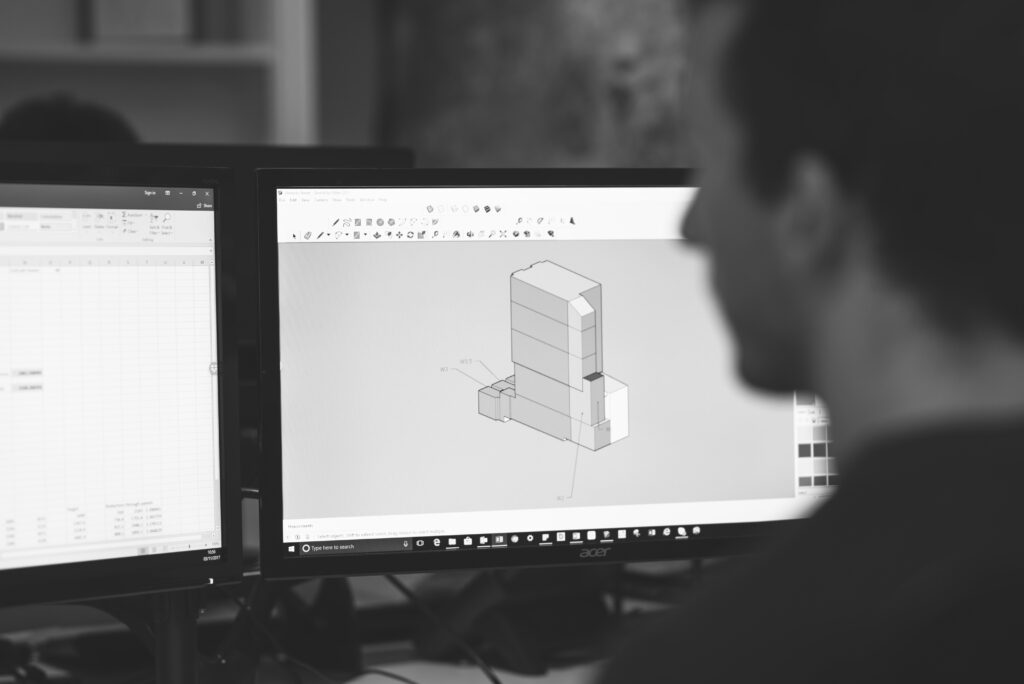The calculation of a Thermal Mass Parameter became a mandatory part of SAP assessments in 2022.
The changes to Part L of the Building Regulations and the release of SAP 10 has changed the way we assess dwellings in the UK. Calculating Thermal Mass Parameter (TMP), rather than selecting from a limited set of defaults, is a significant change. So, what is TMP and how will it affect new build design?
What is Thermal Mass Parameter?
Thermal Mass is an attribute of the mass of the building which enables that building to store heat. Thermal Mass Parameter is a reference to the total thermal mass of the building based on its construction. For some design and building methods, like Passivhaus, thermal mass is a fundamental principle in delivering energy performance.
Why is TMP important?
As the UK moves towards reducing its Carbon emissions, TMP plays an important role in SAP Calculations, as these are used to model energy performance in the UK building regulations. Currently, SAP Assessors can choose an indicative value for a building based on its construction; Low, Medium or High. But what does this tell us? Not much!
Thermal mass is effective in improving building comfort and, in SAP, we are dealing with a building’s internal envelope. So, for example, when internal temperatures fluctuate, thermal mass within the insulated envelope can help to curb these fluctuations by storing thermal energy.
 Thermal mass will absorb the thermal energy when room temperatures are higher and then release thermal energy back to the room when the inside air temperatures are cooler. This means that, potentially, the heating system may not be needed to be switched on for a little while longer.
Thermal mass will absorb the thermal energy when room temperatures are higher and then release thermal energy back to the room when the inside air temperatures are cooler. This means that, potentially, the heating system may not be needed to be switched on for a little while longer.
In real terms, if a dwelling’s internal walls are concrete (which has a high heat capacity), this could reduce the space heating requirements. Of course, this could also lead to overheating in the summer months where internal walls with a low heat capacity (such as timber-framed walls) would keep the space cooler. Therefore, getting the right balance in construction is important.
Understanding a building’s ability to store thermal energy becomes increasingly valuable when we considering rising global temperatures, limiting summer overheating risks and the effects of heat gain on materials that are exposed to solar energy, such as glazing.
How is TMP calculated?
A SAP Assessor will need to understand not only the construction of external heat loss elements, but also the internal elements (such as internal partitions, internal floors and ceilings) to be able to calculate TMP. By understanding the materials used, an assessor can identify the material’s specific heat capacity and density and use a U Value calculator to calculate a Kappa value (in kJ/m²K) for the element.
An assessor calculating a Kappa value would be concerned with the materials used within the first 100mm of a particular element on both sides (those that are exposed to the internal air of the dwelling). The Kappa values will be used within the SAP Calculation as a summation of the heat capacity in contact with the internal air which is then divided by the total floor area to provide the Thermal Mass Parameter in kJ/m².
What is the effect on SAP?
If we are looking to build comfortable, sustainable homes, the accurate calculation of thermal mass is a must. Considering that TMP helps us to understand the building’s ability to retain and release thermal energy, it could help to reduce demand on space heating and cooling.

Lightweight modular construction has low thermal mass
However, as with everything in SAP, TMP can work for or against us – it is important to strike the right balance with the construction and review overheating risks.
As a rule of thumb, highly insulated buildings and high thermal mass will generally result in lower energy requirements. Poorly insulated buildings and low thermal mass will generally result in higher energy requirements because, in this scenario, the temperature inside the building will reduce more rapidly. Even in this general example we can identify a couple of obvious issues;
- Summer overheating in buildings with a high thermal mass and high insulation
- Heat loss in the winter months in buildings with a low thermal mass and low insulation resulting in higher fuel usage
Therefore, TMP is not used to solve these issues – the fabric of the building in general, fuel usage and heating/cooling requirements will still be the determining factors in a SAP calculation.
In Conclusion…
When calculated, the Thermal Mass Parameter may improve energy performance within SAP, for others it may not. Regardless of it’s effect TMP will need far more consideration moving forward and it does provide additional accuracy in modelling dwellings through SAP. The significant changes made in 2022 mean that thermal mass should be reviewed as early as possible with your assessor.
Need Help With Your Project?
Just give us a call on 0330 055 34 05 , or email us at be@buildenergy.co.uk
